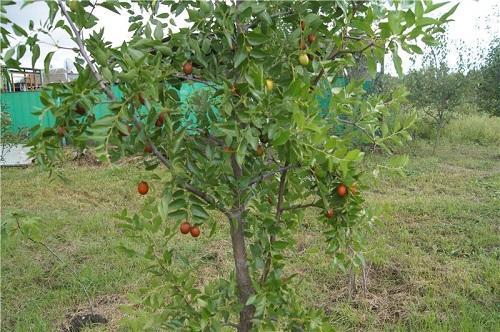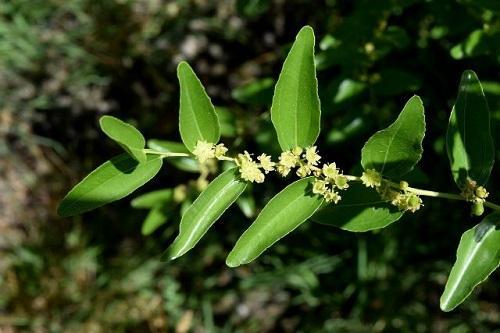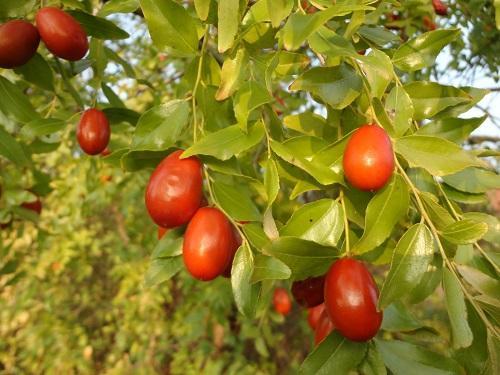Exotic zest of the garden - Ziziphus Moorish
 Ziziphus Moorish belongs to the Krushinov family. This exotic plant came to us from distant eastern countries and India and is not yet very common. However, those gardeners who risked planting ziziphus in their garden have already become convinced of its high yield, which, by the way, occurs already in the year of grafting of the seedling. Ziziphus fruits are very useful, and folk remedies for various diseases are prepared from its leaves and bark.
Ziziphus Moorish belongs to the Krushinov family. This exotic plant came to us from distant eastern countries and India and is not yet very common. However, those gardeners who risked planting ziziphus in their garden have already become convinced of its high yield, which, by the way, occurs already in the year of grafting of the seedling. Ziziphus fruits are very useful, and folk remedies for various diseases are prepared from its leaves and bark.
Moorish ziziphus has many names, among them - jojoba, Chinese date, unabi.
Plant characteristic
Ziziphus Moorish is a rather tall shrub, capable of reaching a height of 10-15 m. Provided there is sufficient moisture, it is cultivated as an evergreen plant, but during dry periods it can shed its leaves.
The zizyphus has a spreading crown with slightly curved branches covered with a light down. Small (up to 6 cm in length) dark green leaves have an oval shape and short petioles, sometimes slightly wavy leaf edges. The upper part of the leaf plate is glossy, and the back is also pubescent, like the shoots.
A pair of sharp thorns is located in the leaf axils, which causes some inconvenience in caring for, but now practically thornless hybrids have been bred.
During the flowering period, in the middle of summer, umbellate inflorescences are formed on very short peduncles (no more than 3 mm). The number of flowers in one bunch can reach 20 pieces. Each has 5 petals and is white with a slight green-yellow tint.

In nature, zizyphus bears fruit from September to October with tasty small drupes no more than 2.5 cm long, in cultivated varieties the fruits are twice as large. They have a strong glossy green skin that turns brownish as it ripens. The juicy sweet pulp is firm at first, but at the end it becomes soft and tastes like a pear. Inside fetus there is a bone up to 1.5 cm long with a pair of nucleoli.
Growing features
The cultivation of Moorish ziziphus has a number of features:
- It is better to plant a bush in a sunny and wind-protected place. Poor soil should be enriched with organic matter. The vaccination site should not be deepened much.
- The seedlings grafted in spring in October already give the first harvest and then bear fruit very abundantly, therefore it is important to cut the crown annually by formative pruning. You also need to prune the upper shoots and the side branches growing on them so that the fruits are not crushed.
- Since the fruits do not ripen at the same time, they must be plucked in 3-4 runs.
For ziziphus to bear fruit, it is necessary to plant at least two seedlings of different varieties.